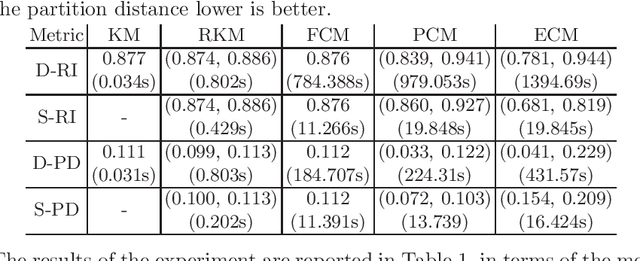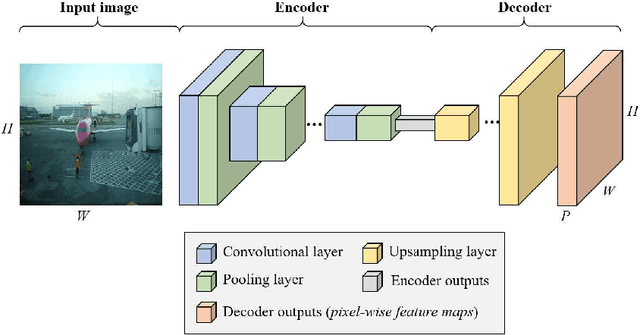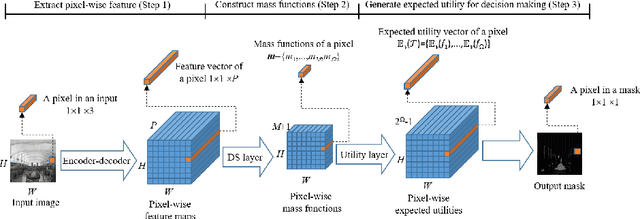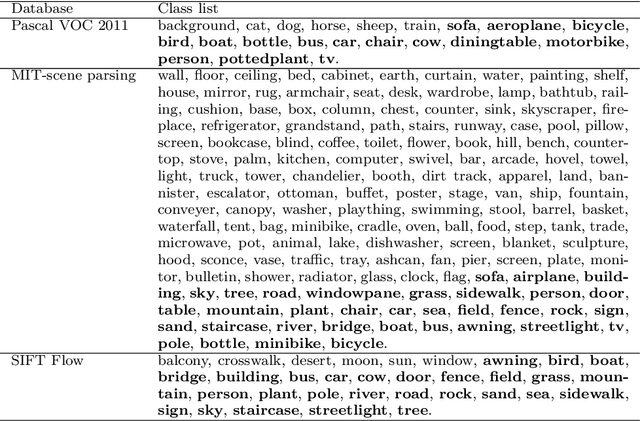Thierry Denœux
A Distributional Approach for Soft Clustering Comparison and Evaluation
Jun 20, 2022
Abstract:The development of external evaluation criteria for soft clustering (SC) has received limited attention: existing methods do not provide a general approach to extend comparison measures to SC, and are unable to account for the uncertainty represented in the results of SC algorithms. In this article, we propose a general method to address these limitations, grounding on a novel interpretation of SC as distributions over hard clusterings, which we call \emph{distributional measures}. We provide an in-depth study of complexity- and metric-theoretic properties of the proposed approach, and we describe approximation techniques that can make the calculations tractable. Finally, we illustrate our approach through a simple but illustrative experiment.
An evidential classifier based on Dempster-Shafer theory and deep learning
Mar 25, 2021



Abstract:We propose a new classifier based on Dempster-Shafer (DS) theory and a convolutional neural network (CNN) architecture for set-valued classification. In this classifier, called the evidential deep-learning classifier, convolutional and pooling layers first extract high-dimensional features from input data. The features are then converted into mass functions and aggregated by Dempster's rule in a DS layer. Finally, an expected utility layer performs set-valued classification based on mass functions. We propose an end-to-end learning strategy for jointly updating the network parameters. Additionally, an approach for selecting partial multi-class acts is proposed. Experiments on image recognition, signal processing, and semantic-relationship classification tasks demonstrate that the proposed combination of deep CNN, DS layer, and expected utility layer makes it possible to improve classification accuracy and to make cautious decisions by assigning confusing patterns to multi-class sets.
Evidential fully convolutional network for semantic segmentation
Mar 25, 2021



Abstract:We propose a hybrid architecture composed of a fully convolutional network (FCN) and a Dempster-Shafer layer for image semantic segmentation. In the so-called evidential FCN (E-FCN), an encoder-decoder architecture first extracts pixel-wise feature maps from an input image. A Dempster-Shafer layer then computes mass functions at each pixel location based on distances to prototypes. Finally, a utility layer performs semantic segmentation from mass functions and allows for imprecise classification of ambiguous pixels and outliers. We propose an end-to-end learning strategy for jointly updating the network parameters, which can make use of soft (imprecise) labels. Experiments using three databases (Pascal VOC 2011, MIT-scene Parsing and SIFT Flow) show that the proposed combination improves the accuracy and calibration of semantic segmentation by assigning confusing pixels to multi-class sets.
From Shallow to Deep Interactions Between Knowledge Representation, Reasoning and Machine Learning (Kay R. Amel group)
Dec 13, 2019Abstract:This paper proposes a tentative and original survey of meeting points between Knowledge Representation and Reasoning (KRR) and Machine Learning (ML), two areas which have been developing quite separately in the last three decades. Some common concerns are identified and discussed such as the types of used representation, the roles of knowledge and data, the lack or the excess of information, or the need for explanations and causal understanding. Then some methodologies combining reasoning and learning are reviewed (such as inductive logic programming, neuro-symbolic reasoning, formal concept analysis, rule-based representations and ML, uncertainty in ML, or case-based reasoning and analogical reasoning), before discussing examples of synergies between KRR and ML (including topics such as belief functions on regression, EM algorithm versus revision, the semantic description of vector representations, the combination of deep learning with high level inference, knowledge graph completion, declarative frameworks for data mining, or preferences and recommendation). This paper is the first step of a work in progress aiming at a better mutual understanding of research in KRR and ML, and how they could cooperate.
 Add to Chrome
Add to Chrome Add to Firefox
Add to Firefox Add to Edge
Add to Edge